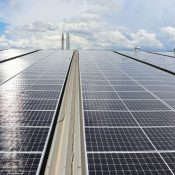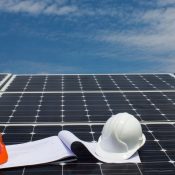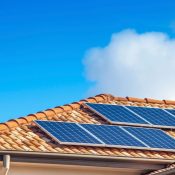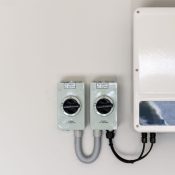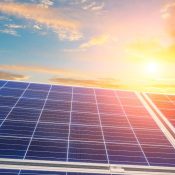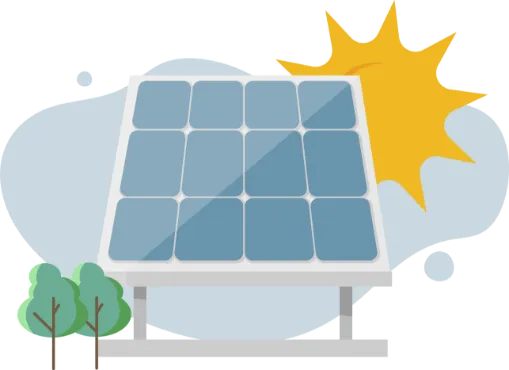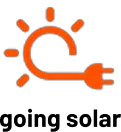Optimisers Vs Microinverters – Which Works Better in Ireland?
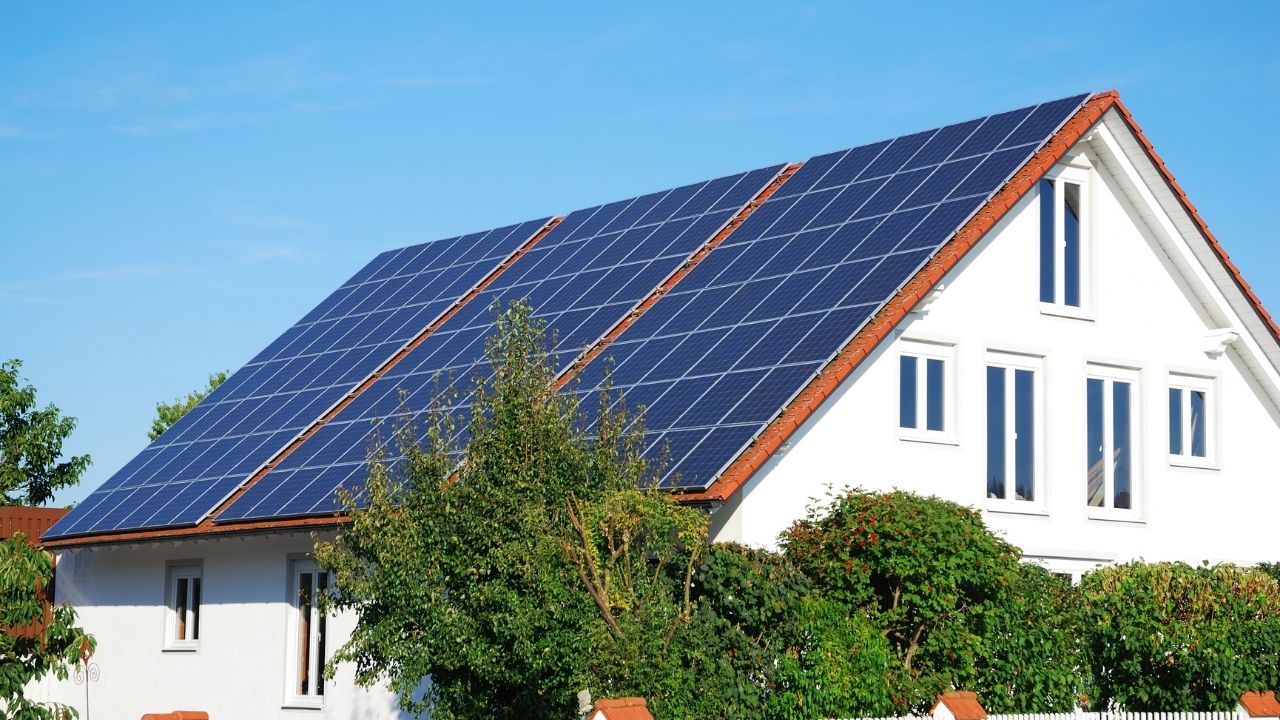
What are Module level Power Electronics?
Module level power electronics (MLPE) are electronic devices that are located behind the panels of a PV system and both microinverters and optimisers try to improve the production from each panel, but they do it in different ways. There are pros and cons to both, and we’ll have a look to see when it is appropriate to use each.
Shading
It is impossible to talk about MLPEs without talking first about shading. In a conventional PV system, the panels are connected in series to form strings. Each string is connected back to a string inverter and typically on residential properties the string inverter will have 2 Max Power Point Tracker (MPPTs). The disadvantage of this is if the production of one of the panels in the string is low then it drags down the production of all the panels. Think of a string like a garden hose, water runs through the hose unobstructed normally. Now think of shading on a panel like squeezing the hose at one point, the flow of all the water in the hose is affected because one part of the hose is restricted. This is the same with a string. If you have shading on one panel it restricts the flow of current through the whole string. Worse still, the restriction of current flow in the shaded panel can actually heat up the affected panel and cause something called a “Hot Spot”. These Hot Spots can reduce the lifespan of your panel.
Microinverters
Using Microinverters on a system is like turning your 10-panel array into 10 individual PV arrays. Each input into the microinverter has its own Max Power Point Tracker (MPPT) to ensure the panel is producing its maximum power. IT doesn’t matter if panels are on different orientations, pitches or levels of shade, the individual panel will all produce at their maximum production given the conditions.
Shading
If there is shading on one of the panels, then just that panel is affected. If one or 2 panels are on a different orientation or pitched roof, then the rest of the string will be unaffected.
Panel Mismatching
There is a power tolerance for each panel of about +3%, so your 400-watt panel may produce up 412Watts. In a string system, the string is limited to the worst performing panel so if that was performing at 400Watts then all the panels are limited to 400watts. As the microinverter threat each panel as an individual array then each panel will produce at its maximum.
Safety
Microinverters convert the DC power from the panel into AC power. This conversion happens at the microinverter which is situated on the roof behind the panel. This means that your power cable up to your PV system is protected by your RCD in your house. As they are treating each panel as its own system the DC voltage in the system is limited to the DC voltage of the panel i.e. 40VDC. With a conventional string system, this voltage is 40VDC multiplied by the number of panels in the string i.e. 40VDC x 10panels = 400VDC.
If power is shut down to your array, then the power from the array is isolated to the roof. This protects anyone who is working with the electrical system in your house. They will not encounter power from your PV system when the power is isolated.
Module Level Arc Protection
Your PV system will be on your roof for 25yr+ and the electrical connections have to survive that length of time, but if you do get a poor connection between one of your panels there is no easy way of identifying this with a conventional string inverter system As each module is monitored individually with microinverters and optimisers the panel with the poor connection can be identified and isolated. This increases safety and protects your production.
Monitoring
With a microinverter, the performance of each panel can be monitored so if there is an underperforming panel it can be identified quickly.
Optimisers
Optimisers are like microinverters, except they do not convert DC to AC power, they converter DC to DC and the AC conversion happen back at the string inverter.
They have much the same advantages as microinverters in regards to shading, placing panels on different orientations or pitches, overcoming panel mismatching, and monitoring. They can also provide the rapid shutdown that a microinverter can, isolating the DC on the roof rather than in the house at the inverter.
Depending on which optimsers you select you may limit your inverter selection i.e. if you select a Huawei or a SolarEdge you can be limited to using a Huawei or SolarEdge edge inverter. If you select a Tigo you can select a great range of inverters. SolarEdge will require an optimiser for every panel, with Huawei and Tigo you can select partial deployment on just the affected modules.
With the use of optimisers the inverter will still require to reach its startup voltage per MPPT. If you have 3no 40VDC panels on one orientation and 3No on another orientation that is 90deg or more from the first orientation then even with the use of optimisers the string may never reach the 120VDC to 150VDC voltage it requires to start the inverter. Systems have to be designed with this in mind.
Which is better? Optimiser or Microinverter
As always, it depends!
One major disadvantage in Ireland with using Microinverters is that it limits your use of battery storage. You must use an AC-coupled battery, which the ESB regards as a separate generator but you are limited to 25A maximum export capacity so you could only install a 2.5kW PV system and AC coupled battery with a 3kW output. You are not restrained in the same way with using optimisers with a hybrid inverter, as you can install a 5kW inverter and a DC coupled battery which is a much bigger system.
Microinverter perform better if you have multiple panels on different orientations at more than 90deg from each other.
There is no equipment inside your house with a microinverter so if you are limited for internal space then microinverters are a good option.
On balance, microinverter are safer at the DC voltage is lower and you have an AC-protected cable all the way up to your array. This is marginal as DC optimisers offer 90% of the same safety features.
Partially deployment of optimisers can be cheaper, depending on the scale of the deployment.
Resolute Engineering Group T/A Going Solar supplies a range of optimisers and Tsun Microinverter. All products are chosen for reliability with both our Tigo optimisers and Tsun microinverter having the lowest fail rates in the industry.
Planning a switch to solar energy?
Contact Going Solar now and Get Free Advice & Quote Within Minutes!
Frequently Asked Questions
Contact Going Solar Now!
Joe Brennan
Founder @ Going Solar
Joe Brennan, the founder of Going Solar, is dedicated to making solar power mainstream in Ireland and meet SEAI objectives. With a focus on affordability and sustainability, he is bringing renewable energy solutions to homes, reducing costs & environmental impact.
Recent Posts

